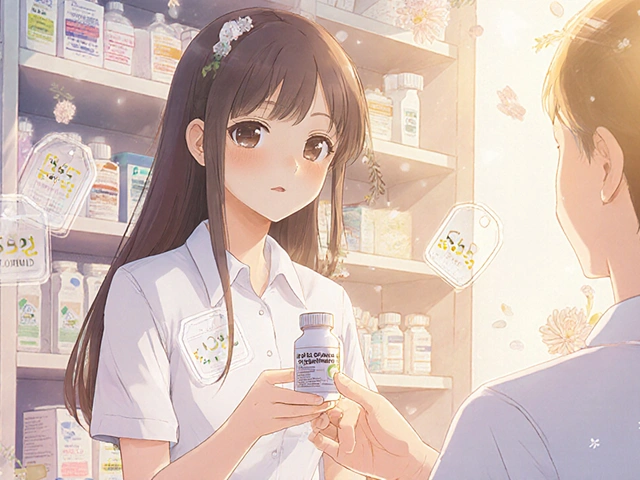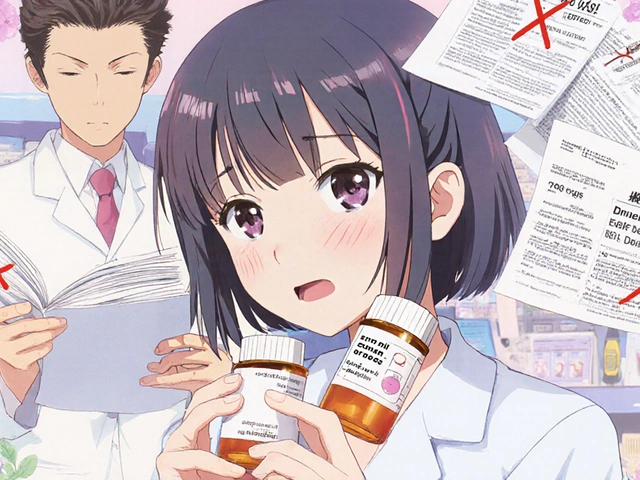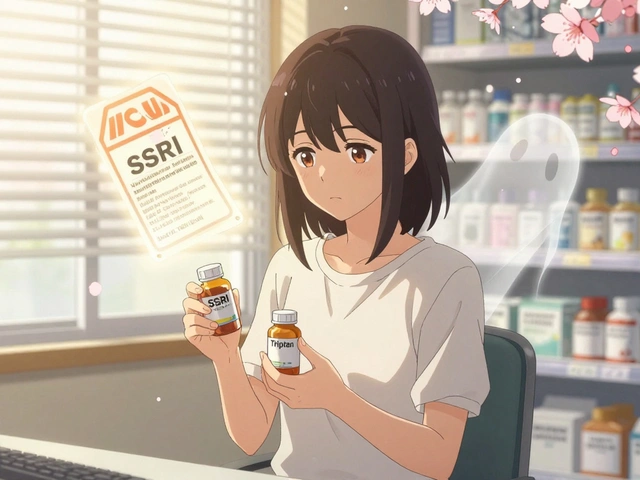
Why Bioequivalence for Combination Products Isn’t Like Other Generic Drugs
When a generic version of a simple pill like ibuprofen hits the market, the path is clear: compare blood levels of the active ingredient between the brand and generic. If they match within 80-125%, it’s approved. But when a product combines two drugs in one tablet, or a drug with an inhaler, or a cream with a special delivery system, that simple rule breaks down. Bioequivalence for combination products isn’t just harder-it’s a completely different game. Regulatory agencies like the FDA and EMA require proof that these complex products deliver each active ingredient at the same rate and amount as the original, but the tools and methods we use for single-drug products often don’t work here.
Fixed-Dose Combinations: When Two Drugs Don’t Behave Like One
Fixed-dose combinations (FDCs) are among the most common and challenging combination products. Think of a pill that contains both metformin and sitagliptin for type 2 diabetes, or a combination of dolutegravir and lamivudine for HIV. The problem isn’t just testing two drugs at once-it’s that the ingredients can interfere with each other. One drug might change how the other dissolves, absorbs, or even breaks down in the body. A 2023 FDA report showed that 35-40% of initial generic applications for modified-release FDCs fail bioequivalence testing, mostly because of unexpected interactions.
Standard two-way crossover studies (where patients take brand and generic, then switch) aren’t enough. Developers now need three-way designs: one arm with the brand FDC, one with the brand mono-drugs taken together, and one with the generic FDC. This isn’t just more work-it triples the number of blood samples, increases volunteer requirements to 40-60 people, and raises costs by 50%. Even then, results can be messy. One study from Teva Pharmaceuticals found that 42% of their complex product failures were tied to bioequivalence issues in FDCs, not manufacturing or stability.
Topical Products: Measuring What You Can’t See
Trying to prove bioequivalence for a cream, ointment, or foam is like trying to prove two raincoats keep you equally dry without measuring how much water actually gets through the fabric. The active drug needs to penetrate the skin’s outer layer-the stratum corneum-but we can’t directly measure that in living people. The FDA currently requires tape-stripping: peeling off 15-20 layers of skin with adhesive tape and analyzing how much drug is in each layer. But here’s the problem: no one agrees on how deep to go, how much tape to use, or how to standardize the process across labs.
As a result, developers often run three or four failed bioequivalence studies before getting it right. Mylan (now Viatris) spent over two years trying to get a generic version of calcipotriene/betamethasone dipropionate foam approved. Three consecutive studies failed because the drug penetration measurements varied too much between test sites. The cost? Up to $10 million per study, compared to $1-2 million for a standard oral bioequivalence trial. Many small companies simply can’t afford to keep trying.

Drug-Device Combinations: It’s Not Just the Drug
Take an asthma inhaler. The drug inside might be identical between brand and generic. But if the button you press, the valve design, or the mouthpiece shape is even slightly different, the dose you inhale changes. The FDA says 65% of complete response letters for generic drug-device combinations cite problems with user interface performance-not chemistry, not stability, but how the device works.
For inhalers, regulators now require aerosol particle size distribution testing. The generic must deliver 80-120% of the reference product’s fine particle fraction-the part that actually reaches the lungs. For auto-injectors, they test force required to activate, injection speed, and needle exposure time. These aren’t standard lab tests. They require specialized equipment, trained operators, and controlled environments. A 2024 FDA workshop revealed that many generic companies lack the in-house expertise to run these tests reliably, leading to delays and rejections.
Why the Rules Are Still Catching Up
The current bioequivalence framework was built for simple pills in the 1980s. Today, over 70% of new drugs approved by the FDA are complex products. But the guidance hasn’t kept pace. There’s no single accepted statistical method for proving population bioequivalence in FDCs. Different FDA review divisions give conflicting feedback. A 2023 survey of 35 generic manufacturers found that 89% called the current requirements “unreasonably challenging.” Small companies, in particular, struggle with the $15-25 million price tag and 3-5 year timelines needed to bring a complex generic to market.
Even international alignment is broken. The EMA often requires extra clinical trials for combination products that the FDA accepts with just bioequivalence data. This forces companies to run duplicate studies, adding 15-20% to development costs. Meanwhile, patent thickets around combination products have increased litigation by 300% since 2019, delaying generic entry by over two years on average.

What’s Changing-and What’s Working
There’s progress, but it’s slow. The FDA’s Complex Generic Products Initiative, launched in 2018, has led to 12 product-specific bioequivalence guidances as of 2024. These are game-changers. For example, one guidance for HIV FDCs now clearly defines how to test both components simultaneously, reducing uncertainty. Companies using these guidances see development timelines shrink by 8-12 months.
Another breakthrough is the use of physiologically-based pharmacokinetic (PBPK) modeling. Instead of running 60-person clinical trials, companies can simulate how the drug behaves in the body using computer models. The FDA has accepted PBPK data in 17 approved generic applications since 2020. One case from Simulations Plus showed this approach cut clinical testing by 40%. Similarly, in vitro-in vivo correlation (IVIVC) models for topical products are now predicting skin absorption with 85% accuracy, based on tape-stripping data.
The FDA is also working with NIST to create reference standards for complex products-something that’s been missing. Initial standards for inhalers are expected by late 2024. These will let labs calibrate their equipment the same way, reducing variability in test results.
What This Means for Patients and Healthcare Systems
Generic drugs saved the U.S. healthcare system $373 billion in 2020. But that savings is at risk if complex products can’t reach the market. The global market for complex generics hit $112.7 billion in 2023 and is growing at over 7% per year. Yet, approval times for these products average 38 months-more than double the 14.5 months for simple generics. If bioequivalence challenges aren’t solved, up to 45% of complex brand products may have no generic competition by 2030.
That means patients with chronic conditions like asthma, diabetes, or HIV may keep paying hundreds of dollars a month for brand-name combination products, even when the science says a generic could work just as well. The real cost isn’t just in dollars-it’s in access, adherence, and health outcomes.
What Developers Need to Do Now
- Engage with the FDA early-Type II meetings have increased 220% since 2020 for good reason. Don’t wait until you’re ready to submit.
- Use product-specific guidances. They’re not optional anymore-they’re your roadmap.
- Invest in PBPK and IVIVC modeling. These tools are no longer experimental; they’re essential.
- Partner with labs that have experience with tape-stripping, aerosol analysis, or device performance testing. Don’t try to build this expertise from scratch.
- Track the FDA’s new Bioequivalence Modernization Initiative. They plan to release 50 new product-specific guidances by 2027-focus on the ones relevant to your product.
What is bioequivalence for combination products?
Bioequivalence for combination products means proving that a generic version delivers each active ingredient at the same rate and extent as the original brand product. This applies to fixed-dose combinations (two drugs in one pill), topical products (creams, foams), and drug-device combinations (inhalers, injectors). It’s not enough to show the drug is chemically the same-you must prove the body absorbs and uses it the same way.
Why are bioequivalence studies for combination products more expensive?
They’re more expensive because they require larger studies, specialized testing methods, and longer timelines. For example, a standard oral bioequivalence study costs $1-2 million and involves 24-36 volunteers. A complex FDC study may cost $5-10 million, need 40-60 volunteers, and take years to complete due to multiple analytes, device performance tests, or skin penetration measurements. The equipment alone-like LC-MS/MS systems or aerosol analyzers-can cost over $500,000.
Why do some generic combination products fail bioequivalence testing?
Failures happen because the ingredients interact in unexpected ways, or the delivery system doesn’t perform identically. In FDCs, one drug can change how another dissolves. In inhalers, a slightly different valve can alter particle size. In creams, tiny differences in texture or pH affect skin penetration. Even minor changes in manufacturing can throw off results. Up to 30% of FDC studies fail on first attempt, and 65% of drug-device applications get rejected for device performance issues.
Can computer models replace clinical trials for combination products?
Yes, in some cases. Physiologically-based pharmacokinetic (PBPK) modeling has been accepted by the FDA in 17 approved generic applications as of mid-2024. These models simulate how the drug moves through the body and can predict bioequivalence without running full clinical trials. For topical products, in vitro-in vivo correlation (IVIVC) models are showing 85% accuracy in predicting skin absorption from lab tests. These tools are reducing clinical testing by 30-50% and cutting development time significantly.
Why don’t all generic companies make combination products?
The cost and complexity are too high for many. Developing a complex generic can cost $15-25 million and take 3-5 years. Small and mid-sized companies often lack the specialized labs, equipment, and regulatory expertise needed. Many get discouraged after one or two failed bioequivalence studies. As a result, only a few large manufacturers dominate the complex generic market, limiting competition and keeping prices high.






There are 14 Comments
Peter Aultman
Big props to the FDA for pushing PBPK models. That’s the future.
Dilip Patel
kshitij pandey
Brittany C
Sean Evans
Ryan Anderson
But seriously, PBPK is a game changer. I’ve seen a 12-month study cut down to 4 months with modeling. We need more of this.
Kevin Wagner
gent wood
Chris Ashley
Brian Bell
Nathan Hsu
Scott Saleska
Anjan Patel
Scarlett Walker
Write a comment
Your email address will not be published. Required fields are marked *